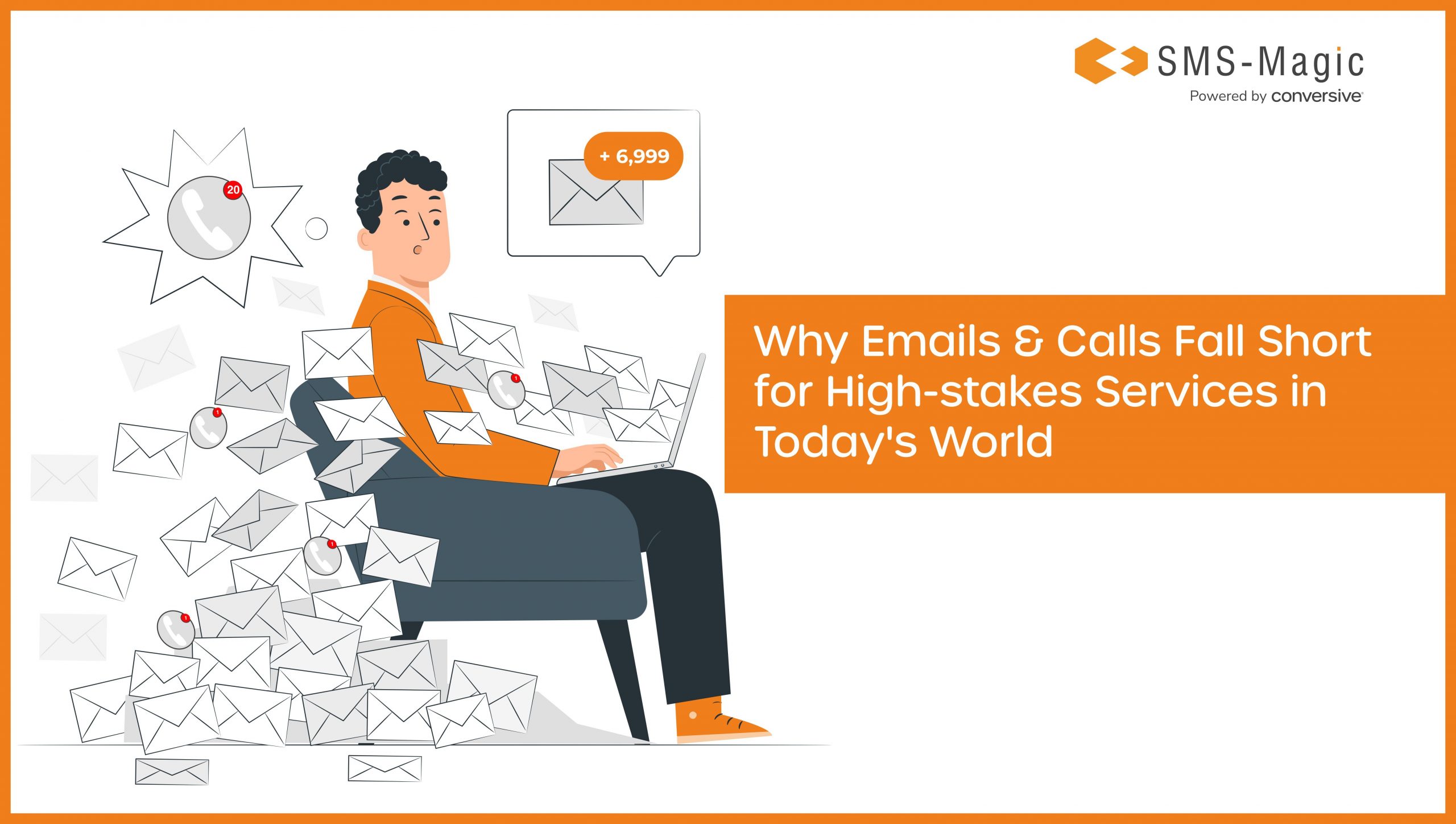×

All it takes is 2 easy steps
If you're a winner, we will send you $100 Amazon gift card at Dreamforce!


Many industries, like healthcare, legal, and education, provide “high-stakes” services. These sectors deal with sensitive, urgent issues where outcomes truly matter for people’s lives. However, legacy communication methods struggle to deliver the level of engagement that today’s world demands.
High-consideration services involve consumers making major decisions where they expect positive, or even life-changing outcomes. With so much on the line, these services must offer engagement that builds trust and meets individual needs. A few defining characteristics of these services are:
Rigid communication channels like email and phone calls restrict the ability to deliver personalized, convenient engagement.
Email communication has notable drawbacks and constraints. The rapid accumulation of emails can lead to an inbox overloaded with information. Sifting through an abundance of messages can be a tiresome task that causes critical messages to get lost in the shuffle. Some examples are:
Using a phone for business can be convenient, but it may also have many drawbacks. The biggest roadblock with phone calls is that the person being called must be available. If they are not available, we run into these problems:
The digital age has fundamentally transformed how consumers interact with businesses. With the rise of social media and instant messaging platforms, people now anticipate real-time responses. Traditional modes of communication like emails and phone calls, though still prevalent, are increasingly perceived as archaic for high-stakes services.
Factors Influencing Today’s Communication Standards Several underlying factors shape the current expectations:
Text Messaging and Its Benefits Text messaging, particularly SMS and chatbots, has rapidly risen as a preferred communication method. Here’s why:
These factors show why legacy channels fall drastically short of meeting the engagement requirements of high-stakes services. Businesses and professional services need modern solutions to facilitate convenient, compliant, and trusted communication between providers and consumers. Companies that embrace text messaging to connect with customers on their terms will gain a substantial competitive advantage as we move deeper into the digital future.
Connect with us today to get your high-stakes conversations started.
Stay updated on business text messaging
Text MAGIC for Demo to
USA: 36343
AUS: (61)409564682
UK & ROW: +44 7860017509
Email: care@sms-magic.com